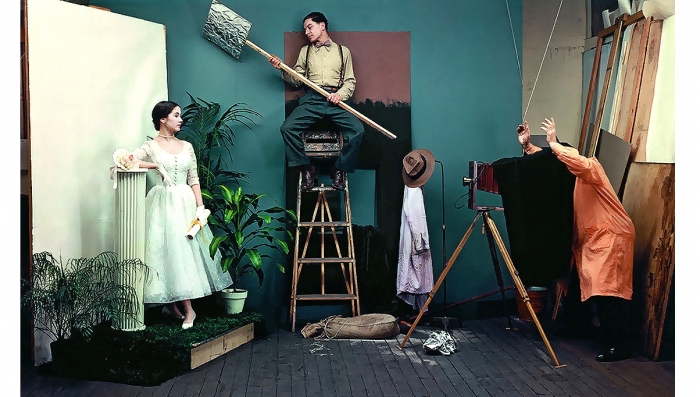
Lovely Faces Were Also Employed to Promote Religious Faith, Click Here and read about that...
Inasmuch as this 1944 article sums up the bygone world of the New York fashion model, the terms "heroin chic" and "bulimia" are not found on any of it's five pages (an over site, no doubt). The Forties were a time when a model would be just as likely to get a booking from a commercial artist as she would a photographer, and, unlike the Twenties and the earliest days of the Thirties, it was a time when a standardized image of beauty was well-established.
"- five feet nine inches in height, weight 110 pounds, bust 33, waist 24, hips 34, blonde or a light shade of brown hair. She will have quick, clever eyes and a very expressive face."
"Many of the models are bitter, unhappy girls inside. They soon grow disillusioned with their dream of modeling as a gateway to theatrical glory; they learn that their height is against them."
Read about the attack of the "actress/models"!
By 1948 the business of fashion modeling had developed into a $15,000,000-a-year industry. This article examines just how such changes evolved in just a ten year span of time:
"American advertising struck pay dirt when it discovered the super salesgirls whose irresistible allure will sell anything from a bar of soap to a seagoing yacht...Always there was the secret whisper of sex. For women it was, 'Be lovely, be loved, don't grow old, be exciting'... For men it was, 'Be successful, make everyone know that you're successful, how can you get women if you're not successful?'"
"The importance of attractive girls in our economy was stressed by John McPartland when he discussed modern advertising in his recent best seller, Sex in Our Changing World (1947).
Legendary fashion designer Christian Dior had a good deal of trouble with people who would illegally copy his designs; click here to read about that part of fashion history.
In the Sixties the most popular fashion model was Twiggy (né Lesley Hornby, b. 1949), and in the Fifties the top model was Suzy Parker (1932 – 2003: truly the first "Super Model"). But in the 1940s the honor went to Jinx Falkenburg (1919 - 2003).
The 1940's was the decade in which the advertising world began to gaze more favorably upon photographers rather than illustrators, who had long held the prominent place since printers ink was first invented. During the earliest days of her career Falkenburg's likeness was often painted until the her bookings with photographers quickly picked up. She was the first"Miss Rheingold" (appointed, not elected), she appeared in movies, entertained the troops and when she stood before the cameras she was paid all of $25.00 an hour (the term "super Model" wouldn't come about until the Seventies). The attached photo essay will give you some more information.
From Amazon:
JINX by Jinx Falkenburg For a time, Jinx Falknenburg shared the high ground as the best-paid fashion model with a lass named Anita Colby (1914 - 1992). She was restless and highly ambitious beauty who recognized that her exulted position in the fashion world was only a temporary one - and by the time that the clock ran out on her, Colby's resume would boast of numerous high-profile positions such as publicist, syndicated columnist, movie studio executive and T.V. talk show hostess.
From Amazon:

This article pertains to her brief stint at the Selznick Studios as some sort of perfumed Über-Stylist who lorded over all the other glam-squad proletarians on the lot.
Her book, Anita Colby's Beauty Book , has become a classic on 1950s style. , has become a classic on 1950s style. Fashion Modeling Czar John Powers once said of model Georgia Carroll:
"She is the most terrific thing that ever hit this business." "They sip your favorite coffee, drive your dream car, display the latest fashions, show you how to cook a waffle: they are potent forces in the scheme of American advertising. Their faces and figures adorn the covers of countless magazines...often they develop into stars of the cinema. They come from all over America to an office on Park Avenue, New York, where a quiet, discerning man named John Robert Powers appraises their charms and schools them for the job of selling sables to society or groceries to the great American housewife."
Beginning in the mid-Twenties and spanning the years leading up to the late Forties, John Robert Powers (1892 - 1977) created and maintained the first modeling agency in New York City (if not the world) and during the Forties, the Powers Agency grossed over five million dollars a year. Attached are nine photos of the most popular fashion models he represented in 1941; a unique breed of woman known at the time as "Powers girls".
|
MORE ARTICLES >>> PAGE: * 1 * 2 * |
|